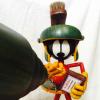Is a certain grain orientation better than others? When viewing the turned object the exposed grain might be end, edge or flat. Does it make a great deal of difference which is used? I can see you might not want to mix grain orientations, or does that work?.
In this video I would term those segments as edge grain. https://www.youtube.com/watch?v=6Yl-qDN1HtI




 Reply With Quote
Reply With Quote





